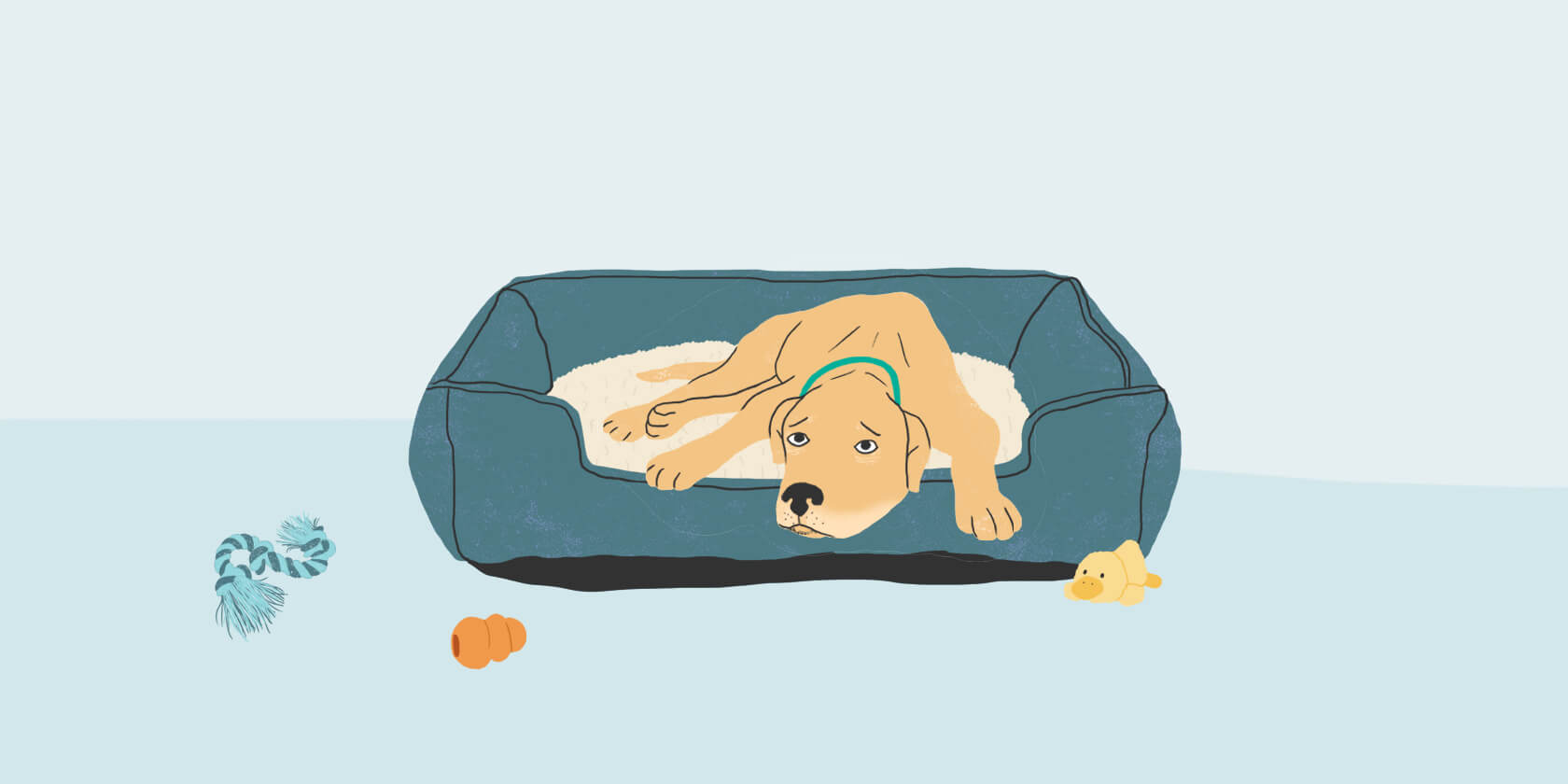While symptoms of pain in dogs can vary, they may not always show up in the ways you think. Acute pain (like that from an injury), is often associated with pain signals we typically think of, such as yelping or limping. Chronic pain, like that from osteoarthritis (OA), is shown in less obvious ways, like sleeping more, having more difficulty going up or down stairs, taking more time and seeming “stiff” when getting up from a nap, or just not being as playful.
Because you live with your dog, you know how they normally act and will likely be able to see a shift in their behaviors over time. While you might think that their “slowing down” is just a natural part of them getting older, the reality is that there’s typically an underlying medical reason why your dog is slowing down and getting around with more difficulty. Your veterinarian can translate the symptoms you’re seeing into indicators of OA pain.
If any of the following statements are true for your dog, they may be showing symptoms of dog arthritis and warrant a vet visit.
“My dog limps, but they’re not in pain.”
A dog that’s limping is a dog in pain. They may not be vocalizing their pain, but dogs typically limp because they’re trying to protect a painful area. Pain from osteoarthritis may begin as an acute injury to the joint, but can progress to chronic pain. Make sure to tell your veterinarian if your dog is limping.

“My dog has outgrown their playfulness,” or “They’ve lost their inner puppy.”
Such observations can be symptoms of dog arthritis or a number of other painful conditions. The pain from dog osteoarthritis can cause a decline in a dog’s emotional well-being, causing a happy-go-lucky dog to act more reserved and less playful.
“My dog has trouble getting up or down the stairs.”
If your once-nimble dog has difficulty getting up or down the stairs or jumping on the couch, it’s likely an indication that they have arthritis. It could also be a problem with their vision, muscle weakness, or another problem, but oftentimes osteoarthritis is the cause of such difficulties.
Your veterinarian may ask you more questions about other symptoms that you’ve noticed that can help them determine the cause of your dog’s pain. If that suffering stems from pain due to osteoarthritis, your veterinarian can create a pain management protocol to help your dog feel better and feel more like themselves. Managing their OA symptoms can help improve their comfort, mobility, and quality of life. Many pet owners are amazed at the positive change in their dog’s personality and playfulness once the discomfort of their dog’s underlying arthritis has been properly addressed.
ZPC-00444R2
IMPORTANT SAFETY INFORMATION: Librela is for use in dogs only. Women who are pregnant, trying to conceive or breastfeeding should take extreme care to avoid self-injection. Hypersensitivity reactions, including anaphylaxis, could potentially occur with self-injection. Librela should not be used in breeding, pregnant, or lactating dogs. Librela should not be administered to dogs with known hypersensitivity to bedinvetmab. Adverse events reported post-approval include ataxia (lack of balance/coordination), anorexia (loss of appetite), lethargy (tiredness), emesis (vomiting), and polydipsia (increased drinking). The most common adverse events reported in a clinical study were urinary tract infections, bacterial skin infections and dermatitis (skin irritation/inflammation). See full Prescribing Information.
See the Client Information Sheet for more information about Librela.




